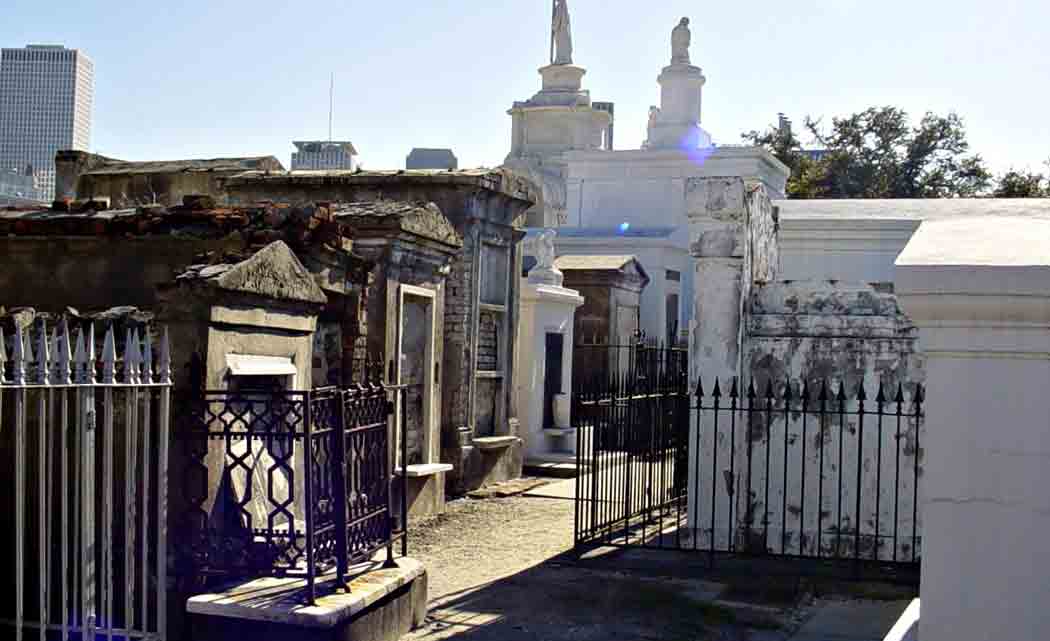PHOTO COURTESY OF ANOBIUMLIT.COM
By JANET McCONNAUGHEY
NEW ORLEANS — A historic cemetery that may have begun the New Orleans tradition of above-ground crypts will soon be off-limits to tourists wandering about on their own because of tomb vandalism, the Catholic archdiocese that owns the property announced.
Starting this month, entry to St. Louis Cemetery No. 1 and its labyrinth of mausoleums will be restricted to relatives of the dead buried there, visiting scholars and only those with a tour guide registered with the Archdiocese of New Orleans.
The new policy is necessary to protect the tombs, archdiocese spokeswoman Sarah McDonald said. “We’ve had unlicensed tour guides and others handing out markers and instructions on how to mark up various tombs,” she said in releasing the new policy.
One of the most famous tombs is believed to hold the remains of 19th century voodoo priestess Marie Laveau. In 2013, Laveau’s tomb was covered from one end to the other with pink latex paint. But the problems extend beyond her tomb.
“We also have people leaving trash in the cemetery, littering, setting up camp,” McDonald said in an interview.
Established in 1789, the cemetery surrounded by 6 1/2-foot-high brick walls is the oldest remaining graveyard in this city beside the Mississippi River. A Deep South tourist destination, New Orleans is renowned for Mardi Gras, jazz, Cajun cuisine and the sometimes elaborate mausoleums that give its cemeteries the phrase “cities of the dead.”
Early burials in St. Louis No. 1 are thought to have been below ground or in low tombs, according to the website for a nonprofit group, Save Our Cemeteries. Concrete and marble burial vaults, experts believe, were built atop those earlier graves to accommodate later burials.
St. Louis No. 1 covers an entire city block with “a maze of tombs and aisles,” the organization notes, including “oven vaults” for those unable to afford the stand-alone mausoleums for affluent members of various societies.
Among the thousands buried in St. Louis No. 1 are Homer Plessy, the plaintiff in Plessy vs. Ferguson in which the U.S. Supreme Court ruled that segregation laws were constitutional; and world chess champion Paul Morphy.
Sherri Peppo, director of the archdiocesan cemeteries office, said that several tombs have been broken into and vandalized in the past year. Even security cameras have been stolen.
“We needed to take some steps to protect both the sacred nature of the cemetery and preserve the history that is there as well,” Peppo said.
Complicating matters, a local legend has it that Laveau will grant a wish for someone who makes three Xs on the tomb believed to be hers, knocks on the tomb and shouts the wish.
“I can tell you what it is in three words: graffiti, vandalism and desecration,” guide Renee Dodge of Haunted History Tours told a dozen people with a tour group visiting Tuesday afternoon.
Registration for tour guides began last month, the archdiocese said. Tour companies and independent guides must show insurance and a city license. Guides who occasionally bring tours to the cemetery can pay $40 for a one-time pass; those giving regular tours must pay $4,500 to $5,400 a year.












No Comment